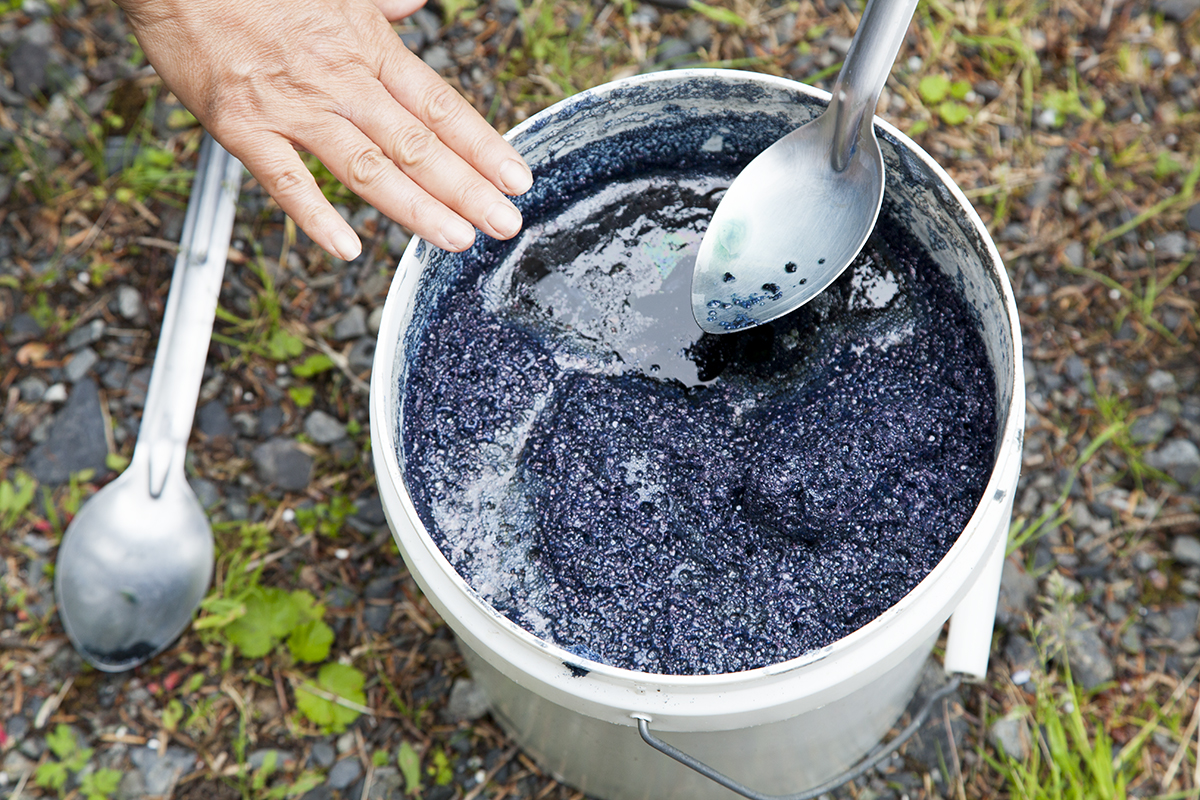
This week: How to deal with indigo crocking
Every week, we are emailed with questions from our natural dye community asking simple and complex questions that we thought might be worth sharing. Of course, all of your burning questions are answered by natural dyer in chief, Kathy Hattori, Founder of Botanical Colors.
Recently, I decided to try for a darker blue using the 1-2-3 method with 10g indigo per litre of water. The color is good and the vat works. I am, however, getting a lot of crocking. What might I do the fix this? I am also getting bleeding on to the white part of my tied and clamped shibori pieces. How might I prevent that from happening?
Crocking is when the dye rubs off onto your hands, skin or other surfaces, and this is especially challenging with indigo. The 1-2-3 vat also creates sediment, which can contribute to crocking because the sediment does not bond with the fibers and comes off. Here’s a few things to consider:
- Dip in a vessel that is taller and narrower rather so that you have more room for manipulating the fabric away from the sediment on the bottom of the vat.
- Dip very carefully and don’t stir up the sediment.
- Oxidize the fabric in a water bath that has hydrogen peroxide in it (about half a cup of the drugstore variety) in a bucket of water. This helps oxidize the compressed areas of the clamped pieces.
Bleeding is the description of dye leaking under clamped and tied areas of shibori, so the contrast between the dye and the undyed is not crisp.
- The ties and the clamping have to be very tight. If the fabric is too bulky, it is difficult to get highly defined results.
- The fabric bundle should be soaked in lukewarm water for at least an hour, and several hours is better. The water that seeps under the resisted areas helps act as a resist itself as the dried fabric is not “wicking” indigo liquid.
- Oxidize as above and make sure the areas closest to the clamp are opened so they oxidize.
- Once you unclamp, have a fresh water bath ready so that you can quickly rinse any unoxidized areas so that they don’t spread into the resisted areas.
